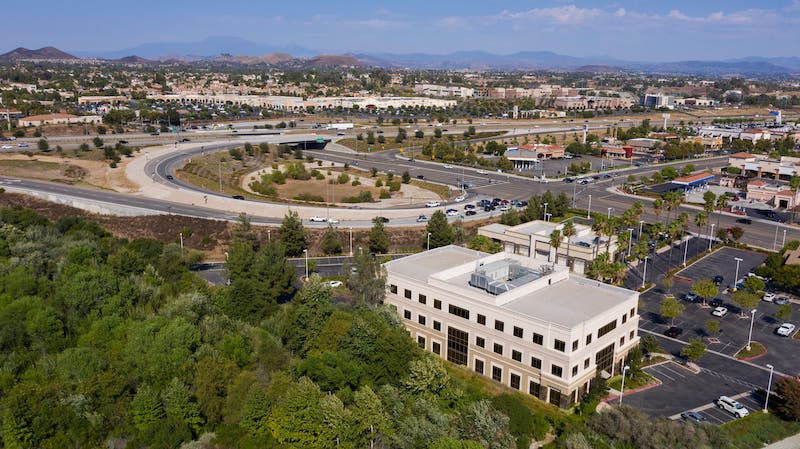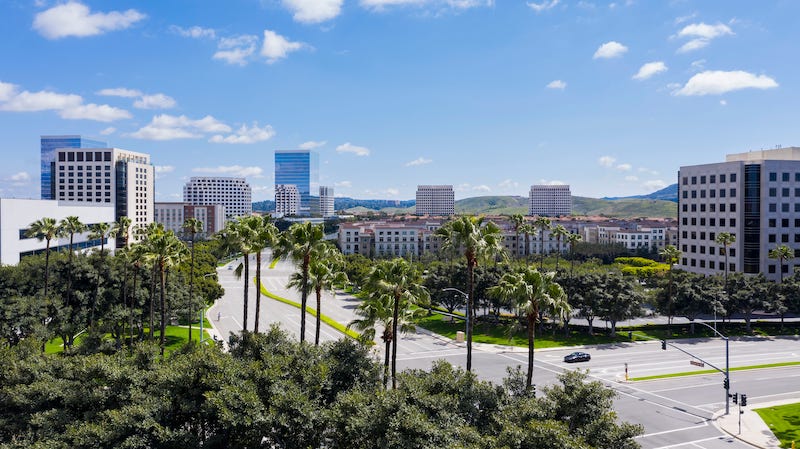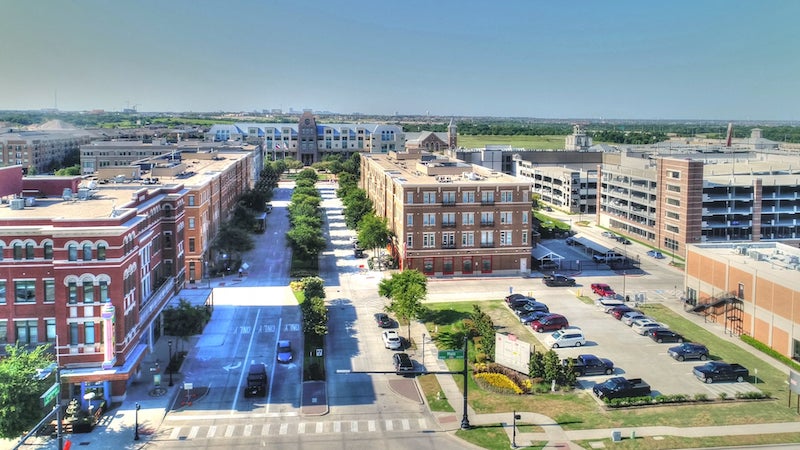To help illuminate the unique security concerns faced by women, we identified the 5 safest cities for women in the US based on an analysis of the most recent FBI/National Census statistics.
The list gives a strong indication of where it is safer for women to live, and identifies the kind of attributes these places shared.
Find out which US cities are the safest places for women to live, or learn more about our methodology below.
Curious about how women approach moving to a new location? Check out their thoughts here.
???? Discover the most dangerous cities for women in the USA.
Overview
The safest cities for women are characterized by some clear commonalities.
Size
Firstly, populations in the safest cities tend to be lower than the cities that are more dangerous for women.
Our ranking only considers cities with populations over 100,000 for the sake of relevance, but even so, there is a strong link between crime rate and population density.
Affluence
The other obvious trait that the safest cities share is wealth.
More affluent cities with small populations had much lower crime rates, and almost all of them are known as residential commuter cities serving larger metropolitan areas.
It is also evident that the safest cities are concentrated overwhelmingly in California and Texas, including all our choices for the top 5.
Check out the list below.
Top 5 Safest Cities
1. Murrieta, California

- Population: 112,941
- Rape: 19 = 16.8 per 100,000 (lowest)
- Aggravated assault: 29 = 25.67 per 100,000
- Property crimes: 1,512 = 1,338.7 per 100,000
Among the cities with smaller populations, Murrieta is among the safest for women not just in the state of California, but in the country as a whole, with low violent crime and property crime rates across the board.
It’s considered the heart of Southern California’s wine country, so it’s replete with wineries and vineyards. Murrieta’s warm mediterranean climate and charming natural landscapes make it an attractive place to raise a family.
It’s certainly suburban, but it’s also one of the fastest growing cities in California.
Source: Murrietaca Government Website
2. Irvine, California

- Population: 273,157 (highest)
- Rape: 52 = 19 per 100,000
- Aggravated assault: 69 = 25.26 per 100,000 (lowest)
- Property crimes: 3,823 = 1,399.56 per 100,000
With a population estimated at 273,157 in 2019, Irvine is the most populated city on the list, making it one of the safest cities of its scale in the country.
Though the actual number of crimes is higher than other entries with smaller population sizes, stratifying the rates reveals that it is considerably safer than other cities.
Glendale—another Californian city well regarded for safety—had a total of 117 aggravated assaults compared to just 69 in Irvine in 2019, despite being about a third smaller in size.
Source: QuickFacts, Irvine city, California, United States Census Bureau
3. Thousand Oaks, California

- Population: 126,966
- Rape: 27 = 21.1 per 100,000
- Aggravated assault: 38 = 29.7 per 100,000
- Property crimes: 1,392 = 1,088 per 100,000 (lowest)
Named for its abundance of Oak trees, Thousand Oaks is an attractive residential city in the Greater Los Angeles area. Despite its population growth, crime rates have generally been in decline for the last three decades, and it consistently ranks as among the safest places in the country.
It’s a well-known film location of choice for Hollywood studios and TV production companies. The beautiful wildlife does unfortunately require a small disclaimer: it’s home to mountain lions, coyotes, rattlesnakes, and bears, as well as occasional wildfires, which have resulted in the destruction of almost 200,000 acres since 2018.
Sources:
Mountain Lion/Rattlesnake Info, Toaks
Wildfires, Toaks
Another long hot summer is here. Are you living in a wildfire-prone area? You might need to check your smoke alarms.
4. Frisco, Texas

- Population: 199,445
- Rape: 46 = 23.06 per 100,000
- Aggravated assault: 83 = 41.6 per 100,000
- Property crimes: 2,390 = 1,198 per 100,000
About half an hour outside Dallas, Frisco is known as a commuter city for the Dallas-Fort Worth area. The low crime rates make it among the safest cities in Texas, a state that, much like California, has plenty of safe residential places for women with families.
It boasts a balanced mix between suburb and city, with an emphasis on retail space, restaurants, the arts, and sports (the city houses the Dallas Cowboys’ practice facility). Poverty rates currently sit at around 4%.
Sources:
Frisco, Texas Is the Dallas-Fort Worth Suburb Worthy of a Visit
QuickFacts, Frisco city, Texas, United States Census Bureau
5. Allen, Texas

- Population: 105,961 (lowest)
- Rape: 19 = 17.9 per 100,000
- Aggravated assault: 54 = 50.4 per 100,000
- Property crimes: 1,154 = 1,089 per 100,000
Surprise—another commuter suburb! Allen, Texas also serves the broader Dallas area, located just north of the city. The school district is known as one of the best in the state, making it an attractive residential area for families looking for a safe space to live in.
It’s generally considered affluent, with a median household income of $113,719 and a poverty rate teetering on 4%.
Source: QuickFacts, Allen city, Texas, United States Census Bureau
At a glance
Lowest number of rapes: Murrieta, California
Lowest number of aggravated assaults: Irvine, California
Lowest number of property crimes: Thousand Oaks, California
Our Methodology
Using the most recent FBI statistics on crime rates, our list emphasizes the crimes that disproportionately affect women—rape and aggravated assault.
For the list of safest cities, we have included both the total known number of crimes that occurred in the year 2019 as well as a stratified sample out of 100,000 people.
We have also included property crime rates among our considerations because it has a strong impact on how ‘safe’ a person feels in their home, neighborhood, and city.
However, this is not considered in the ranking of the cities because there is no data to suggest any firm correlation between gender and victims of property crimes like there is for violent crimes.
For the sake of relevance, communities considered are only those with populations above 100,000. Population sizes will have changed since the last census (conducted in 2019). Communities with just a few hundred or a few thousand members have much lower crime rates.
Though the FBI’s statistics are the only crime rate statistics available in the US provided by the government, the only crime that cities are required by law to report is murder. This means the list should not be considered a completely exhaustive report on crime, but a guideline.
The FBI discourages rankings because the data can ‘unfairly’ represent the effectiveness of specific law enforcement agencies. Crime is caused by a wide range of sociological factors. Our rankings do not indicate anything at face value about the effectiveness of law agencies.
Definitions
- Violent crime – includes murder, homicide, assault, battery, in addition to all types of sex crimes.
- Property crime – includes burglary, larceny theft, motor vehicle theft, etc. Arson is not considered a property crime.
- Sex crime – includes statutory rape, sexual assault, prostitution, human trafficking, as well as all relevant offenses against children.
Data Source:
U.S. Census Bureau, American Community Survey, 2019 1-Year Estimates, Compiled by The Center for Community Solutions, Large U.S. cities with total population above 300,000.
FBI – https://ucr.fbi.gov/crime-in-the-u.s/2019/crime-in-the-u.s.-2019/tables/table-8/table-8.xls/view
